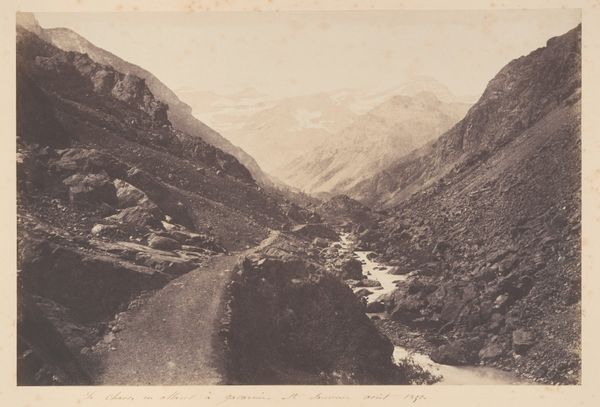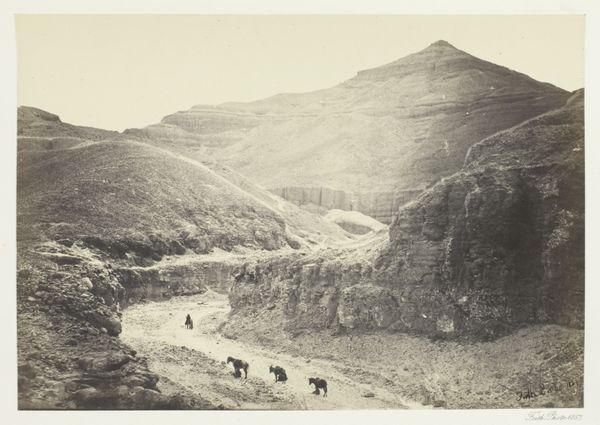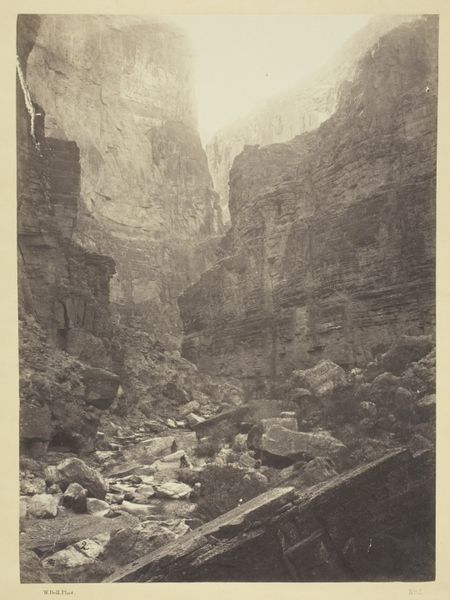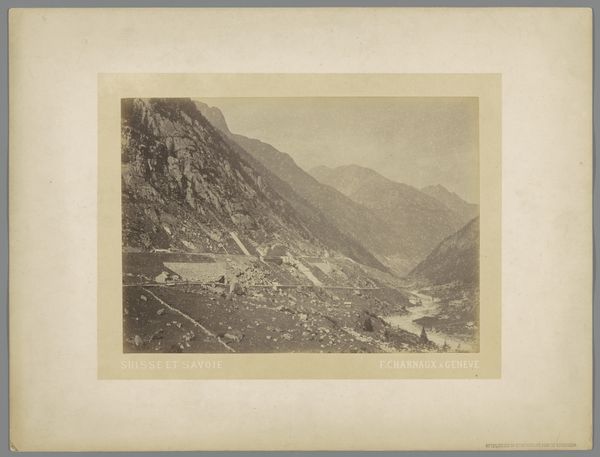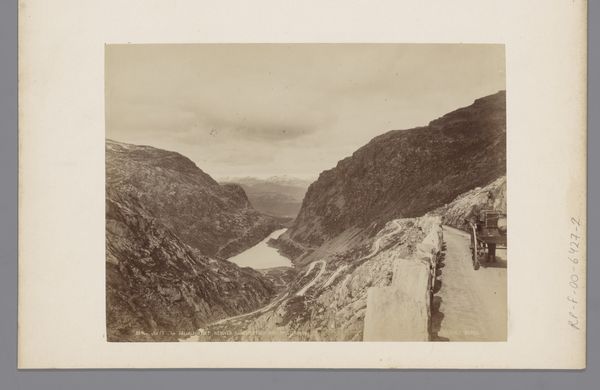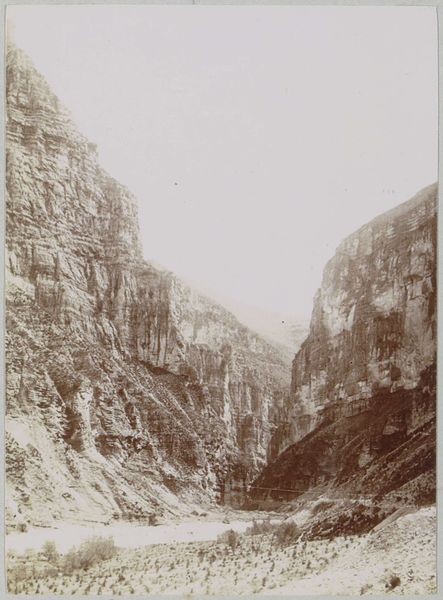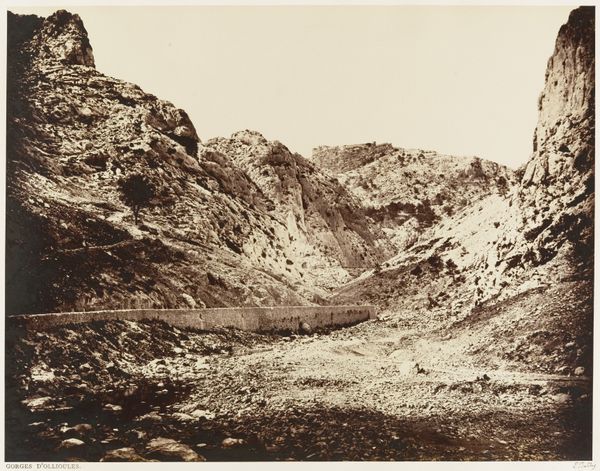
Gorge d'Estaubé prise des gloriettes d'Héas, St-Sauveur 1853
0:00
0:00
photography
#
16_19th-century
#
landscape
#
photography
#
realism
Dimensions: Image: 9 5/8 × 14 5/16 in. (24.5 × 36.4 cm) Sheet: 12 in. × 18 9/16 in. (30.5 × 47.2 cm)
Copyright: Public Domain
Joseph Vigier captured the Gorge d'Estaubé in this photograph, likely around 1861, using a process that renders the landscape in tones of brown. Notice how the stark contrast between light and shadow emphasizes the steep, imposing forms of the mountains. The composition is structured by strong diagonal lines that converge into the distance, drawing the eye along the winding path of the river below. The photograph embodies a fascination with the sublime, where nature is depicted as both awe-inspiring and potentially overwhelming. Vigier uses the formal elements of light, shadow, and perspective to create a sense of depth and scale. The mountains are not merely physical entities but become emblematic of nature's grandeur. Consider how Vigier's choice of medium and his compositional techniques work together to present a landscape that is not just seen, but felt. Photography in this context is not just a recording tool but an artistic medium capable of shaping our perception and understanding of the natural world.
Comments
No comments
Be the first to comment and join the conversation on the ultimate creative platform.

